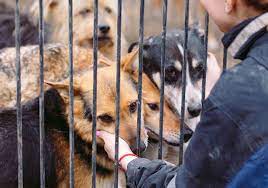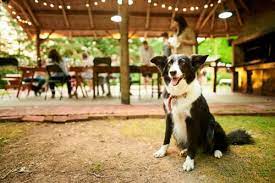When the summer sun shines down, pet owners must take extra care in keeping their furry friends safe and preventing heatstroke. Dogs are at risk for heat-related illnesses, quickly progressing to fatal conditions such as heatstroke if not treated with the utmost care. In this blog, we are going to go above tips and precautions that you should take care of in summer while keeping your furry friend safe from the summer heat.
Table of Contents
ToggleHeatstroke Dogs Explained
Heatstroke is when a dog’s temperature gets too high, over 104°F (40°C) Dogs help cool down their bodies by panting (breathing out heavily) and releasing heat through the skin surface of their paws76and nose. But because cooling is a delicate balance and almost always dependent on the environment, as compared to us who maintain an even body core temperature regardless of ambient surroundings unless seriously sick or injured – when direct high temperatures are inflicted upon dogs in prolonged sun without proper shade/water their efforts can backfire. heatstroke!
Signs of Heatstroke in Dogs
Knowing the early signs of heatstroke can mean life or death for your dog. Watch out for these symptoms:
– Excessive panting
– Difficulty breathing
– Increased heart rate
– Drooling and thick saliva
– Weakness or collapse
– Vomiting or diarrhea
– Bright red gums and tongue
If you have any reason to believe your dog is suffering from heatstroke, you must act quickly and seek veterinary care immediately
Avoiding Heat Exhaustion: Tips to the Rescue
1. Provide Ample Water and Shade
Make sure your dog always has fresh, cool water available drink-especially when they are outside. Provide multiple bowls of water in the shade, and use a large heavy bowl that is difficult to tip. Your dog will need a reprieve from the direct sunlight so provide shaded areas with umbrellas, tarps (make sure she can’t get tangled up), or trees.
2. Avoid Midday Exercise
Avoid long walks and strenuous activities with your dog at peak heat hours, usually 10 AM-4 PM. Take long walks during the early morning or late evening to cool temperatures. Dog paw pads can also burn on hot pavement, so before setting out for walks, test the temperature of the pavement with your hand.
3. Never leave your dog in a parked car
The heat can quickly result in deadly conditions due to its ability to transform parked cars into furnaces, despite windows being rolled down. If you are running errands, either leave your dog at home or make sure someone remains in the car with it as long as the air conditioning is on.
4. Apply Cooling tech/ techniques
– Cooling Mats and Vests: Purchase a cooling mat or vest specially made for dogs to help keep their body temperature in check.
Wet Towels and Spraying: Cover your dog’s back with a cool, water-soaked towel, or else lightly spray the fur.
Swimming and Water Play: Make sure that your dog enjoys the water, but if he does provide plenty of opportunities to swim or play in shallow cool water.
5. High-Risk Breeds and Conditions Tracking
Breeds prone to heatstrokeHeredarily brachycephalic (short-nosed) breeds like Bulldogs and Pugs are more helpless against heatstroke due in part to their physiology. Older dogs, young puppies, and those suffering from medical conditions, such as obesity or heart disease are all at risk during the warm months.
Heatstroke and How to Respond
To help prevent your best pet from suffering in the heat, consider these steps to be proactive:
– Relocate Dog: Move the dog to a shaded or air-conditioned area
Cool a dog off: Do not use ice-cold water, wetting and fanning your pet can encourage evaporation to help cool them down.
Liquids: Give sips of water but do not force to drink.
Conclusion
This proactive attention, of course, is what’s needed to prevent heatstroke in dogs. After following these tips and making your dog’s safety a top priority, you can spend an exciting summer with minimal risk. Reminder: It is important to be on high alert as heat stroke can kill, and ensure appropriate action quickly if your dog demonstrates distress signs.
Make sure your furry buddy stays cool and happy this summer so they can keep wagging those tails and singing their barky songs to you!
For more similar info:
https://roguepetscience.com › blogs › dog-health › sum…
































